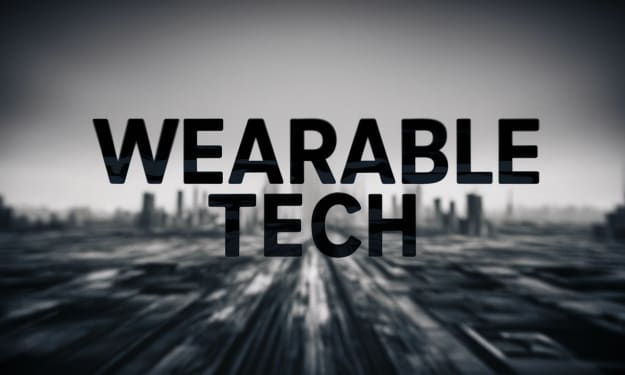Biometric Security: Protecting Data with Your Unique Identity
How Your Fingerprint, Face, and Voice Are Changing the Way We Secure Information

Introduction
In an age where digital data is more valuable than ever, protecting this information has become a top priority. Traditional passwords and PINs are no longer sufficient to safeguard our personal and sensitive data. Enter biometric security, a technology that uses your unique physical traits—such as fingerprints, facial features, and voice—to verify your identity and protect your data. This article will explore the world of biometric security, its evolution, applications, and the future of this groundbreaking technology.
The Evolution of Biometric Security
From Fingerprints to Multifactor Authentication
Biometric security is not a new concept. For centuries, fingerprints have been used for identification. However, advancements in technology have expanded the scope of biometric security far beyond fingerprints, incorporating a variety of unique physical and behavioral traits.
Early Use of Biometrics
Fingerprint Identification: Fingerprints have been used for identification since ancient times. In the late 19th century, police forces began using fingerprinting for criminal identification.
Iris Scanning: In the mid-20th century, the concept of iris scanning was developed, using the unique patterns of the iris to verify identity.
Modern Biometric Security
Today, biometric security encompasses a range of technologies, each using different aspects of our unique biological makeup to secure information and devices.
Key Milestones:
Fingerprint Scanners: Widely used in smartphones, laptops, and security systems, fingerprint scanners provide a quick and reliable method of authentication.
Facial Recognition: Facial recognition technology uses advanced algorithms to analyze facial features and verify identity, commonly used in smartphones and security cameras.
Voice Recognition: Voice recognition systems authenticate users based on their unique voice patterns, used in smart assistants and security systems.
How Biometric Security Works
The Science Behind the Technology
Biometric security systems rely on the uniqueness of individual biological traits. These systems capture and analyze these traits to create a digital representation that can be used for identification and authentication.
Capturing Biometric Data
The first step in biometric security is capturing the biometric data. This involves using sensors and cameras to record the unique traits of an individual.
Key Methods:
Fingerprint Scanners: Capture the unique patterns of ridges and valleys on a person's fingertip.
Facial Recognition Cameras: Capture and analyze the unique structure of a person's face, including the distance between eyes, nose, and mouth.
Voice Recognition Systems: Record and analyze the unique characteristics of a person's voice, such as pitch, tone, and cadence.
Creating a Digital Template
Once the biometric data is captured, it is converted into a digital template. This template is a mathematical representation of the unique traits and is stored securely for future comparisons.
Key Processes:
Feature Extraction: The system extracts distinct features from the captured data, such as fingerprint minutiae points or facial landmarks.
Template Creation: These features are used to create a digital template, a unique and encrypted representation of the biometric trait.
Authentication and Verification
When a user attempts to authenticate, the system captures their biometric data again and compares it to the stored digital template. If the new data matches the template, the user is granted access.
Key Steps:
Capture: The system captures the user's biometric data during the authentication attempt.
Comparison: The captured data is compared to the stored template using complex algorithms.
Verification: If the data matches, the user is authenticated; otherwise, access is denied.
Applications of Biometric Security
Enhancing Security Across Various Sectors
Biometric security is being adopted across various industries, enhancing security and convenience in numerous applications.
Consumer Electronics
Biometric security is widely used in consumer electronics, providing a seamless and secure way to access devices and data.
Key Examples:
Smartphones: Fingerprint scanners and facial recognition are commonly used to unlock smartphones and access secure apps.
Laptops: Many laptops are equipped with fingerprint scanners or facial recognition cameras for secure login.
Financial Services
The financial sector has embraced biometric security to protect sensitive financial data and prevent fraud.
Key Examples:
Mobile Banking Apps: Biometric authentication provides a secure and convenient way for users to access their banking apps.
ATMs: Some ATMs use fingerprint or facial recognition for secure transactions.
Healthcare
Biometric security enhances patient identification and data protection in the healthcare sector.
Key Examples:
Patient Identification: Hospitals and clinics use biometric systems to accurately identify patients and access medical records.
Secure Access: Biometric authentication ensures that only authorized personnel can access sensitive patient data.
Government and Law Enforcement
Governments and law enforcement agencies use biometric security to enhance national security and streamline identification processes.
Click Here for Spocket.co: Find Trendy Products to Boost Your Store Sales!
Key Examples:
Border Control: Biometric systems at airports and border crossings verify the identities of travelers and enhance security.
Criminal Identification: Law enforcement agencies use biometric databases to identify and track criminals.
Corporate Security
Businesses use biometric security to protect sensitive data and ensure secure access to facilities and information.
Key Examples:
Access Control: Biometric systems restrict access to secure areas and ensure that only authorized personnel can enter.
Data Protection: Biometric authentication safeguards sensitive corporate data and prevents unauthorized access.
The Future of Biometric Security
Emerging Trends and Challenges
As technology continues to advance, biometric security is poised to become even more sophisticated and widely adopted. However, it also faces challenges that need to be addressed.
Emerging Trends
Several emerging trends are shaping the future of biometric security, making it more secure, convenient, and integrated into our daily lives.
Multimodal Biometrics
Multimodal biometric systems use multiple biometric traits for authentication, enhancing security and reducing the risk of false matches.
Key Advantages: Multimodal systems provide higher accuracy, better security, and improved user convenience by combining traits like fingerprints, facial features, and voice patterns.
Behavioral Biometrics
Behavioral biometrics analyze patterns in how individuals interact with devices, such as typing rhythm, mouse movements, and touchscreen interactions.
Key Advantages: Behavioral biometrics add an extra layer of security by continuously monitoring user behavior and detecting anomalies.
Biometric Wearables
Wearable devices equipped with biometric sensors are becoming more common, providing continuous authentication and health monitoring.
Key Examples: Smartwatches and fitness trackers with heart rate monitors and other biometric sensors offer seamless and secure access to devices and data.
Challenges and Concerns
Despite its advantages, biometric security faces several challenges and concerns that need to be addressed to ensure widespread adoption and trust.
Privacy Concerns
The collection and storage of biometric data raise significant privacy concerns, as this data is inherently personal and sensitive.
Key Solutions: Implementing strict data protection measures, encryption, and anonymization techniques can help mitigate privacy risks.
Spoofing and Hacking
Biometric systems can be vulnerable to spoofing attacks, where attackers use fake biometric data to gain unauthorized access.
Key Solutions: Advanced liveness detection and anti-spoofing measures, such as analyzing subtle biological cues, can enhance the security of biometric systems.
Accessibility Issues
Not all individuals may be able to use certain biometric systems due to physical disabilities or other limitations.
Key Solutions: Designing inclusive biometric systems and offering alternative authentication methods can ensure accessibility for all users.
Regulation and Standards
Establishing clear regulations and standards for biometric security is crucial to ensure its safe and ethical use.
Key Initiatives: Governments and industry organizations are working to develop standards and guidelines for biometric data collection, storage, and usage.
Conclusion
Biometric security is revolutionizing the way we protect our data and secure our devices. From fingerprints and facial recognition to voice and behavioral biometrics, these technologies offer a unique and reliable method of authentication. As we move into the future, the integration of biometric security in various sectors will continue to grow, providing enhanced security and convenience. However, it is essential to address the challenges and concerns associated with biometric data to ensure its safe and ethical use. With the right measures in place, biometric security will play a pivotal role in protecting our digital lives and securing our identities.
About the Creator
Enjoyed the story? Support the Creator.
Subscribe for free to receive all their stories in your feed. You could also pledge your support or give them a one-off tip, letting them know you appreciate their work.






Comments
There are no comments for this story
Be the first to respond and start the conversation.